How to plant the perfect fall garden + a free planning worksheet!
Don’t put your seed packets away just because the crisp fall air has arrived! Fall is a great time to garden! Here’s everything you need to know about how, when and what to plant to have a beautiful and productive fall garden!
Here in Idaho, there is already a tinge of fall in the air! Even though daily temps are still in the 90’s, the overnight temps have begun dipping into the 50’s. The cool morning air is beginning to turn crisp. The days have started getting shorter, ending with golden sunsets each night. And the familiar sweet smoky smell of ditches being burned back has returned.
This is my absolute favorite time of year! Fall is finally coming! Which means, that it’s time to get planting… again!
So buckle up, folks! Today we are talking all about how to grow a totally ridiculously amazing fall garden! We will be covering quite a bit of info, guaranteed to make you the kings and queens of your fall gardens! Plus, I’ve got a free printable Fall Garden Planning Worksheet to get you started! Let’s jump in so you can get to planting all that goodness!
Here’s everything we are going to cover in this full tutorial of growing a fall garden:
- Advantages of a Fall Garden
- Direct Seed or Start Indoors?
- Understanding Frost Dates & Days to Maturity
- Season Extenders
- How to Calculate your Fall Planting Dates
- 22 Veggies to Grow in your Fall Garden
Advantages of a Fall Garden
If you are like me, you are probably still harvesting tons of summer food from your garden. With produce running out your ears, it may be hard to even think about planting more! But, if you enjoy a nice fall season like we do, a fall garden will benefit you in many ways!
- Better tasting greens!
Most likely, all of your lettuce turned bitter and bolted by mid-summer. Lettuces have a hard time tolerating heat, which makes fall a perfect time to plant a new crop! You will also find that lettuces and greens planted in the fall garden are much sweeter than those planted in the Spring/Summer garden! - Extra food for pollinators:
Pollinators, like bees, are busy getting ready for winter right now. They are making sure they have enough food stores to survive the colder months. With fewer food options available to them, they are also desperately searching for pollen! You can help the bees by letting some of your summer harvest go to bloom alongside your new fall veggies! You can also plant blooming perennials or annuals (like mums) in the fall to give the bees some extra blossoms!
- Warmer Soil:
Warm soil = strong roots! Plants need warm soil to be able to fully derive nutrient from the soil for strong leaves, flowers and fruits. Luckily for the fall gardener, your soil has been getting nice and warm all summer! The soil will maintain heat very well, even when overnight temps start to drop. The warm soil temps will give your plant roots a head start before the frost hits. This is why late summer and fall is also a great time to plant perennial flowers and plants! - Less watering, less weeds and fewer pests!
Less work! Music to every gardener’s ears! Gardening in the fall is not only enjoyable because of the cooler temps, but it’s also a bit easier! The cooler temps mean that you can water less often. Many areas also experience more rain in the fall – giving you a break from your watering duties! Several weeds have also come to the end of their warm-season growing cycles, which means less weeding for you! And, best of all, many pests have also headed out for the season!
Direct-Seed or Start Indoors?
Just like with your spring or summer garden, there are two methods for planting seeds in the Fall garden. You can direct seed (plant your seeds outside directly in the garden beds) or start indoors (by planting your seeds in flats or plug trays).
Direct seeding is usually the easiest method. You just pop the seeds into your garden beds at the appropriate time and wait for them to grow. Once they have a good start, you can thin your seedlings to allow proper room for your plants to develop. In the fall garden, direct seeding is most ideal for plants that have fast maturity (60 days or less) and for root crops.
Direct-seeding for fall crops works best with “cold crop” plants that have a quick growth cycle. These include greens, radishes, green onions and peas. Since these crops reach maturity quickly, you are able to squeeze in an entire extra growing season each fall! It’s important to know your average frost dates and start your seeds in time. We’ll talk a bit more about that next.
Starting seeds indoors is most ideal for fall crops that have a longer growing season. Crops like broccoli, cauliflower and Brussel sprouts will grow best if you start them from seed indoors and then transplant them outside. It’s ideal to give them about a 6-8 week head start before planting them out, so you will need to check your frost dates and plant them accordingly.
Starting your seeds indoors will require some extra steps and extra time, but you can also reap a large harvest! If you start your seeds indoors in flats or plug trays, you will most likely need to pot them up a few times before they are ready to go outside. Don’t forget to grab my seed starting soil recipe if you are starting your seeds indoors!
Understanding Frost Dates and Days to Maturity:
For a successful fall garden, you are going to need two key pieces of information: your frost date and the days to maturity for each crop you plant. Let’s talk about how these two factors can set your fall garden up for success!
Days to Maturity:
A common date listed on seed packets is “Days to Maturity”. This date tells you how many days it takes for a seed to germinate and grow to maturity. Basically, how many days it will take from the day you plant until the day you can start harvesting.
For fall gardening, it’s extremely important to know how long it takes a plant to mature. You will want to look for plants that have a fast growth cycle so that you can harvest them before they are killed by the frost and/or the frozen soil. Ideally, I look for plants that take 60 days or less to mature for my fall crops. However, each region has different weather and therefore you may have more or less time for your fall crops.
Which brings us to frost dates…
Frost Dates:
For a gardener, knowing your average frost date is the equivalent of a teenager knowing what the absolutely latest time is that they can sneak back in without being caught! The average frost date is the predicted date of your first and last hard frost. These dates are based on an average of the last 30 years and calculated by the National Centers for Environmental Education.
So, how do you find out what the frost date is for your area? Like most things in life nowadays, we consult the internet! My favorite is the frost calculator from The Farmer’s Almanac. You can select your state and then find your city or type in your zip code. It will show you the predicted date for your first fall frost and your last Spring frost.
Keep in mind that these dates are simply averages to give you an idea of when to prepare for frost. It’s important that you watch your local weather closely each day to monitor frosts.
Season Extenders:
Now that you know your frost dates, it’s important to note that you don’t have to stop gardening simply because the frost has come. Some plants, like kale, will continue to grow despite some frost. And, with the right protection, you can actually extend your growing season substantially!
There are many ways to protect your plants from frost. The easiest is to simply throw some old bed sheets or sheets of 3 – 5 mil greenhouse plastic over your garden beds at night. Professional-grade frost blankets which come in varying weights can also be used. This will help protect crops from light frosts and can extend your growing season until the ground freezes.
However, if you are looking for a more permanent solution, here are several to consider:
- High Tunnels: High tunnels (aka hoop houses) are above ground rounded greenhouse structures that use stretched greenhouse plastic to create the walls. High tunnels are a great option if you have enough room. Even with the protection of a high tunnel, you may still need to use frost blankets to protect your plants from hard frosts.
- Row Tunnels: For the smaller scale gardener, row tunnels might be a better option. They are basically mini high tunnels that are built directly over a garden bed. These tunnels offer an affordable option that is easy to construct, making them a popular choice with home gardeners.
- Cold frames: Cold frames offer a more permanent solution while giving plants a safe and protected place to winter. Depending how large you build them, you can either grow your plants directly in the cold frame or use it like a mini-greenhouse to keep potted plants protected over the winter. We even use ours to harden off our seedlings each Spring! Cold frames can even be built with repurposed material. We built our cold frame from old windows and salvaged wood.
How to Calculate Fall Garden Planting Dates:
Now that you know your frost date, it’s time to calculate exactly when and what to plant. For each crop that you want to grow, look at its days to maturity and then count backwards from your frost date. This will tell you when your last chance to plant is (assuming you aren’t using season extenders).
For instance, my first frost is expected on October 3. I want to plant radishes which take about 30 days to mature. So, counting 30 days back from October 3rd means that I should plant them no later than September 4th.
It’s always advisable give yourself some extra time by planting a couple of weeks before your calculated planting date, if possible. You don’t want to just start harvesting your goodies and have them killed by frost a few nights later! If you are using season extenders, you will usually be able to continue growing well beyond your first frost date!
Click here to grab your free Fall Garden Planner in the Freebie Library! 
22 Veggies to Grow In Your Fall Garden:
Now for the fun part: picking out and planting your fall garden crops! Below is a chart of popular fall crops along with the average days to maturity for each one. I also have a full blog post about 20 of my favorite cold-hardy crops to grow in the fall and winter!
Be sure to check each pack of seeds for that particular variety’s days to maturity. Different varieties of the same plant can vary in their days to maturity, so look for the varieties with the shortest amount of time.

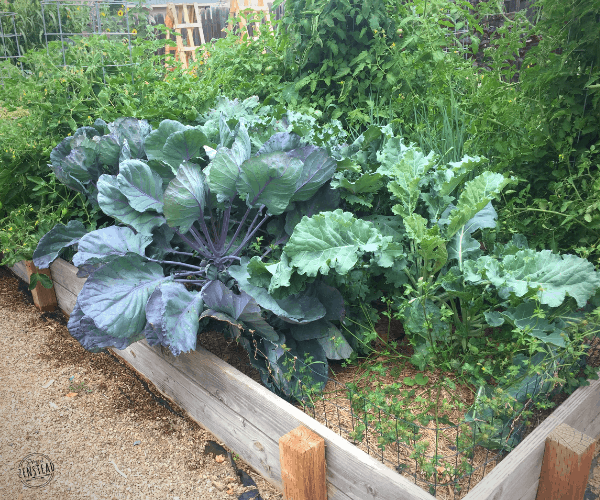
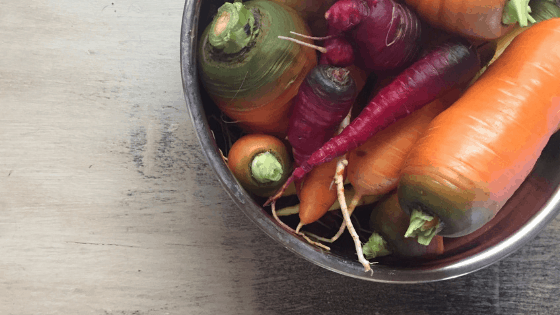
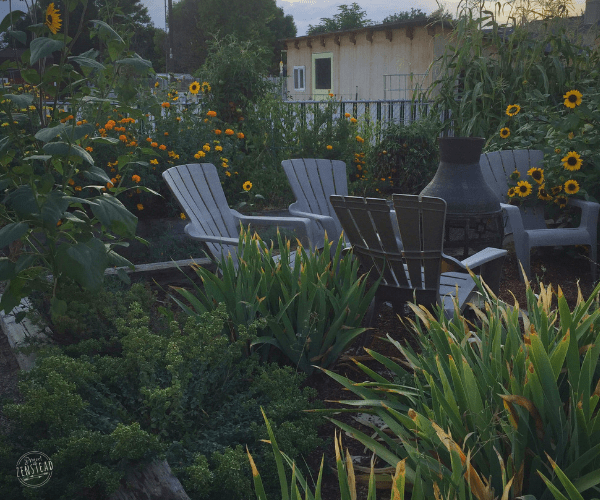
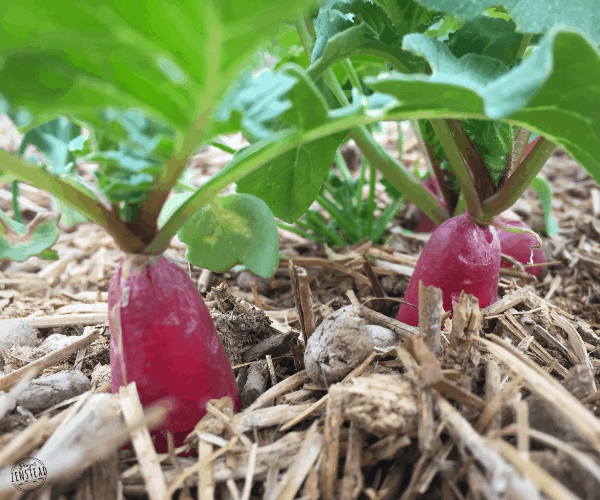
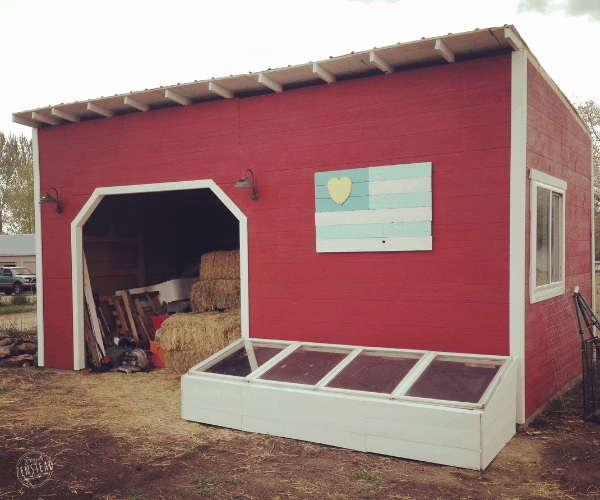
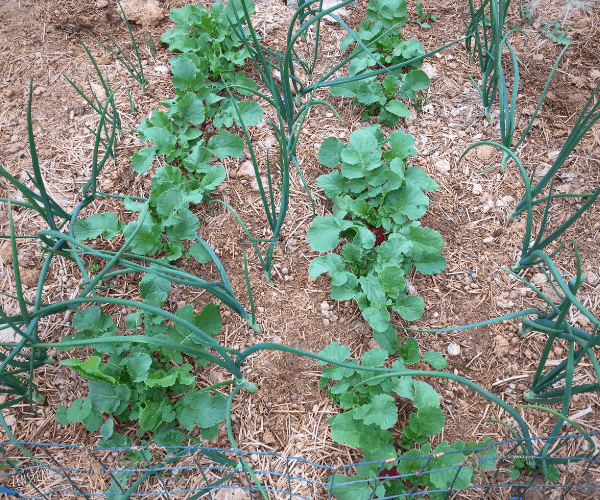
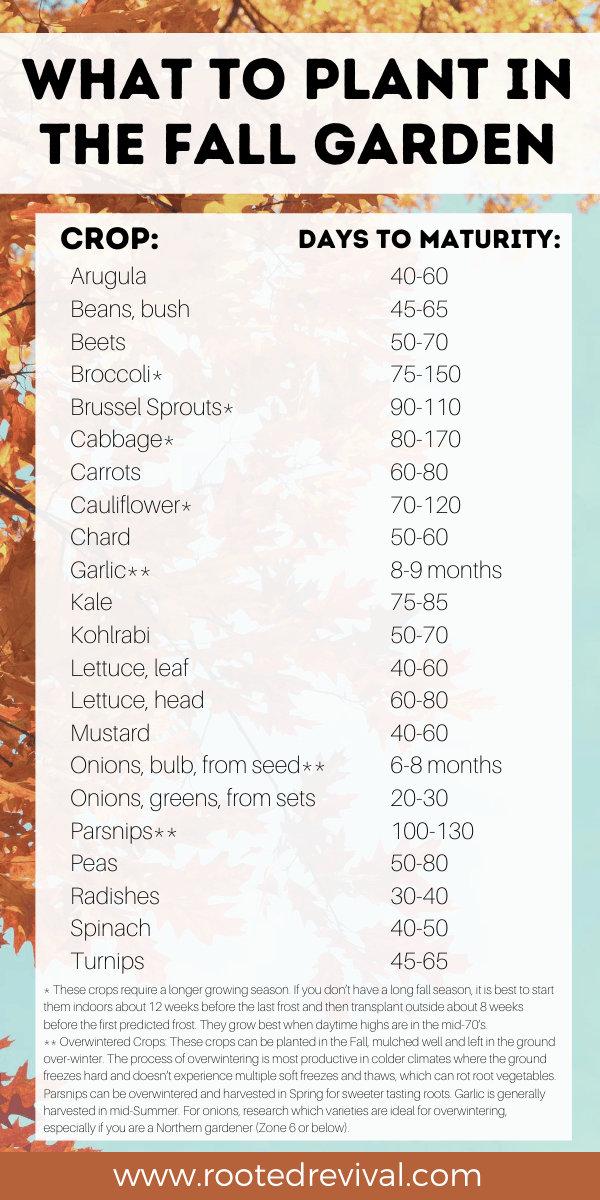
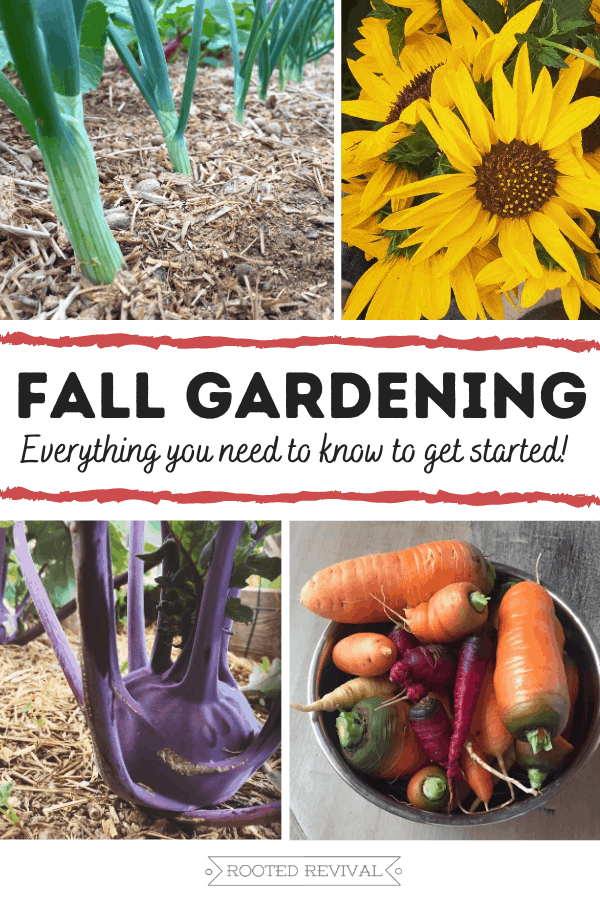



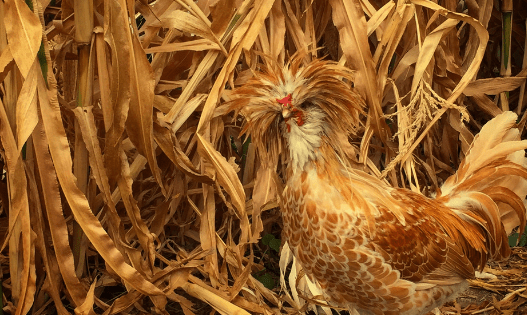
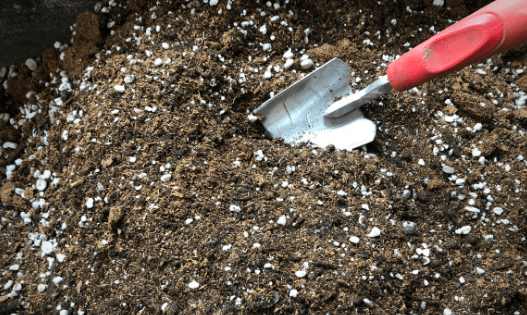


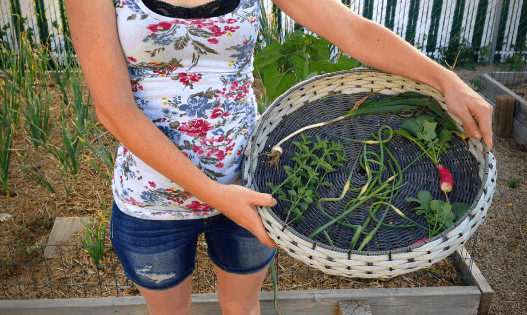
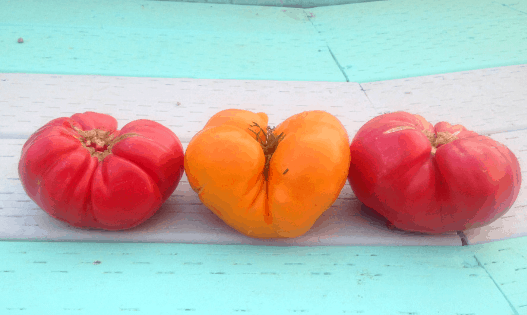

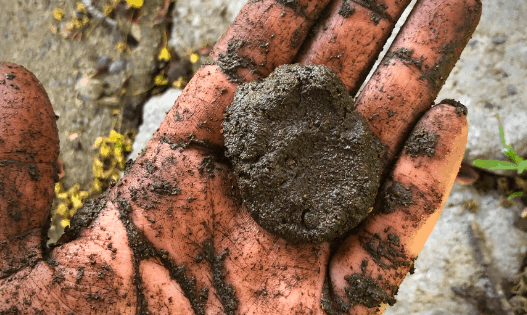
Great timing for this, and thank you so much for the information! I have been asking Mr. Maze about doing a fall garden, but neither of us have ever done one.
I ALSO have a ton of sheets that I’ve been trying to figure out what to do with… do I get rid of them in the name of minimalism? Or do I hold onto them for the sake of sustainability? And now I have a great idea to put them to use!
I also want to print out that list of plants and their maturity dates. That is an excellent resource!
Seriously great post!! Thanks again 🙂
I’m so glad that it’s been helpful for you! And, heck yeah, keep those sheets for the garden! Boom – now you have a purpose for them! 😀 Best of luck with your fall garden – I bet it will be amazing!
This is a very timely post for me. I had a but of a bummer year in my garden due to my own neglect. I over-planted as usual, and then we were out of town so often that it really got crazy out there! Anyway, since I am so bummed that I missed the boat on my harvest, I was thinking about whether or not I could do a fall garden. This has been very inspiring! I am going to pick a only a few things to grow this time. 🙂 Thanks!
That’s perfect! Fall is a great time to just keep it simple and relish in a couple of beautiful crops! Enjoy! ?
Fantastic ideas! I will have to use some of them in the spring because a fall garden is not an option here in Canada.
Oh yes, I’m sure your Fall is very short in Canada! But all these ideas work just as well in the Spring 🙂
Sadly, I don’t have much luck in the garden which is probably why we belong to a CSA but I LOVE reading about gardening. You’ve given me the nudge to try my hand at a few things this year. I do enjoy the planting, just need to get better about the preparation.
I don’t think anyone is born with a green thumb! It takes time and making a lot of mistakes is just a part of the learning process! Keep trying and don’t give up just yet! Start small and build your confidence and skills slowly – you got this!!
Gardening posts are my favourite and this one is definitely on top of my list, I will bookmark it so I can use it when I need. Thank you!
Awesome! Glad it was helpful for you! 🙂
No wonder haven’t seen you over on IG,
you’ve been busy here. Lovely informative blog, thanks!
Haha! Yes, I was just saying today about how I need to get back on Insta! I love it but we’ve been so busy this past week or so with the summer harvest in full swing! I will have another post up soon, too, all about our busy August! 😀 I’ll get back on Insta soon though! Thanks for popping by and reminding me!